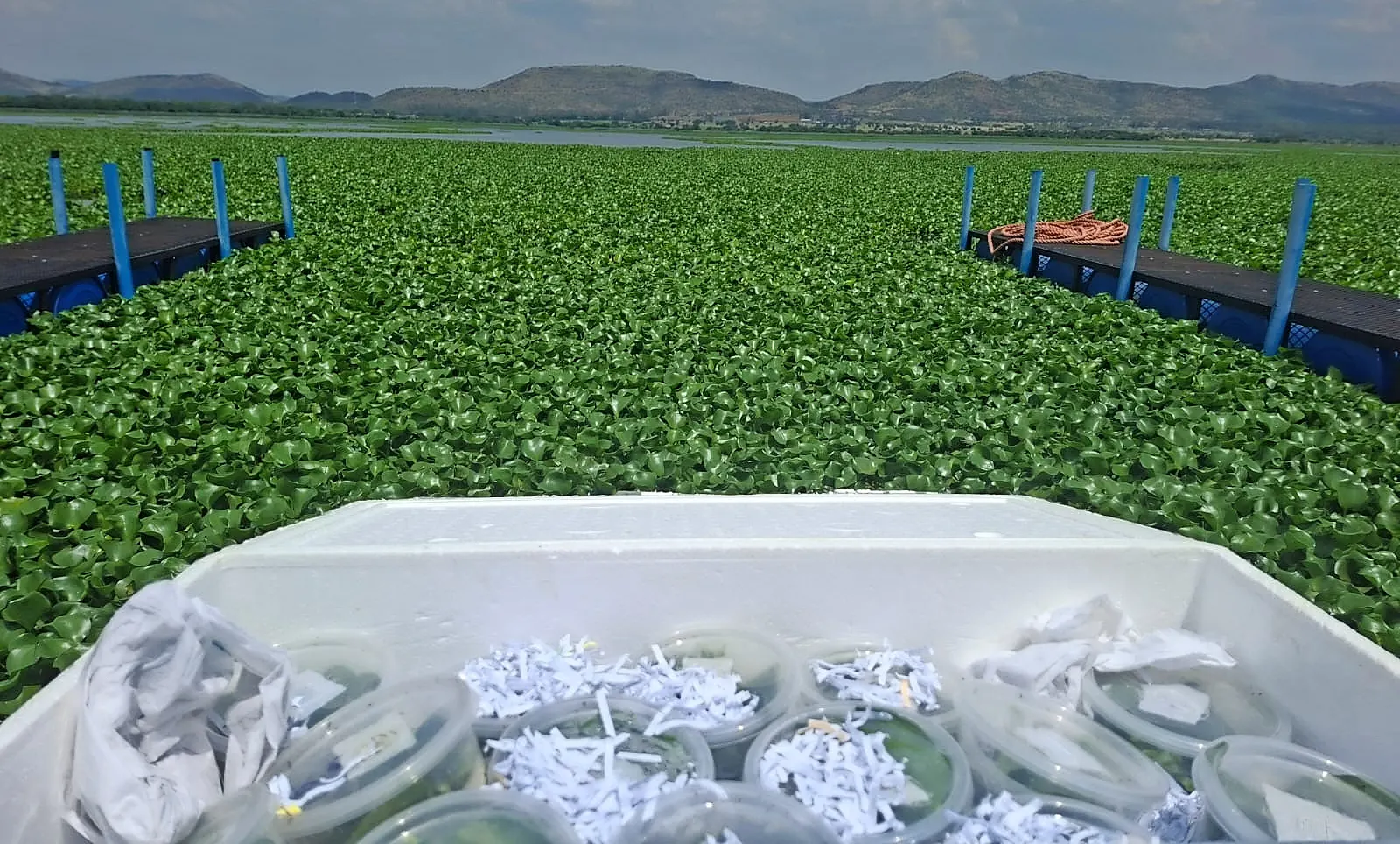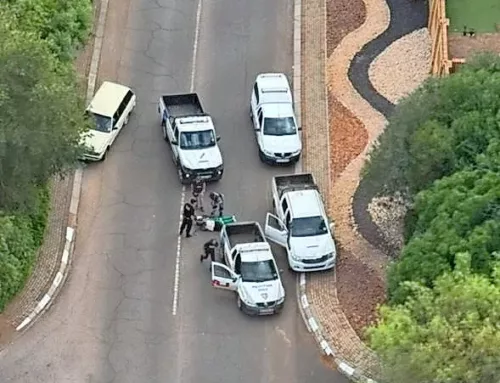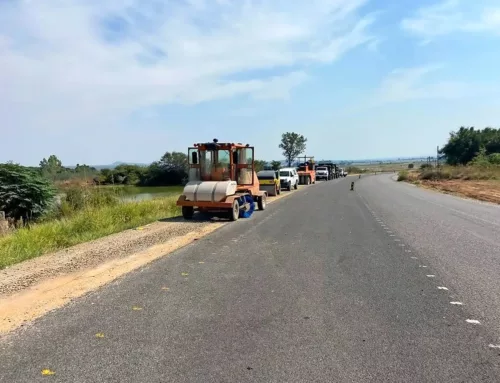Hyacinth – no quick fix, says CBC
Hyacinth currently covers about 40-45% of the Hartbeespoort Dam, but there is no quick fix, such as herbicides, says the Centre for Biological Control of Rhodes University.

CBC in the process of releasing bugs on the hyacinth.
“We know this looks overwhelming. We hear your frustration, and add ours. We are in peak growth season. Dropping water levels expose seed banks to sunlight, which allows seeds to germinate. Rainfall allows upstream nutrients to wash in, resulting in explosive growth. Subsequent increases in water level following rain expose even more seeds to sunlight. The plants are currently growing faster than physical removal can keep up,” said Professor Julie Coetzee.
“Herbicides have been brought up, and we know spraying gives rapid cover reduction, but herbicides are the reason why we are where we are. There has been no herbicide operation since 2017 for good reason. We need sustainable solutions, not short-term fixes that make things worse,” she said.
Herbicides encourage flowering, which adds to the seed bank, causing even worse problems the following year. It also triggers toxic blue-green algal blooms due to the rapid decay of plants, which provides sunlight for algal growth.
“Biocontrol prevents flowering through chronic stress and is a long-term game that works. The Centre for Biological Control has been achieving excellent results since 2019 with Megamelus scutellaris (water hyacinth hopper). Magalies Water has now officially contracted the CBC, and we’re scaling up. Since August, over 100 000 bugs have been released. At least 30 000 were released by community rearing stations. Thank you to our community partners.”
CBC released over 10 000 per week. The bugs chronically stress the plants, prevent flowering (no new seeds), and slow growth rates. “Only once biocontrol reduces growth can physical removal actually get ahead.”
Magalies Water has contracted Hya Matla Organics to physically remove water hyacinth. Hya Matla is currently operating three harvesters and three excavators with 30 manual workers and 22-hour working days. They have ‘Lock and harvest’ methods in place, but unfortunately, this equipment falls prey to repeated vandalism.
“This is going to take time. Pollution is feeding this problem, and the massive seed bank is not going away overnight. However, an integrated management programme with biocontrol, physical removal and nutrient reduction is the only path to lasting control. Over 100 000 bugs and their offspring are already working. Community stations are contributing. Progress is happening at the microscopic level before you’ll see it on the surface. We will update the community weekly.”












